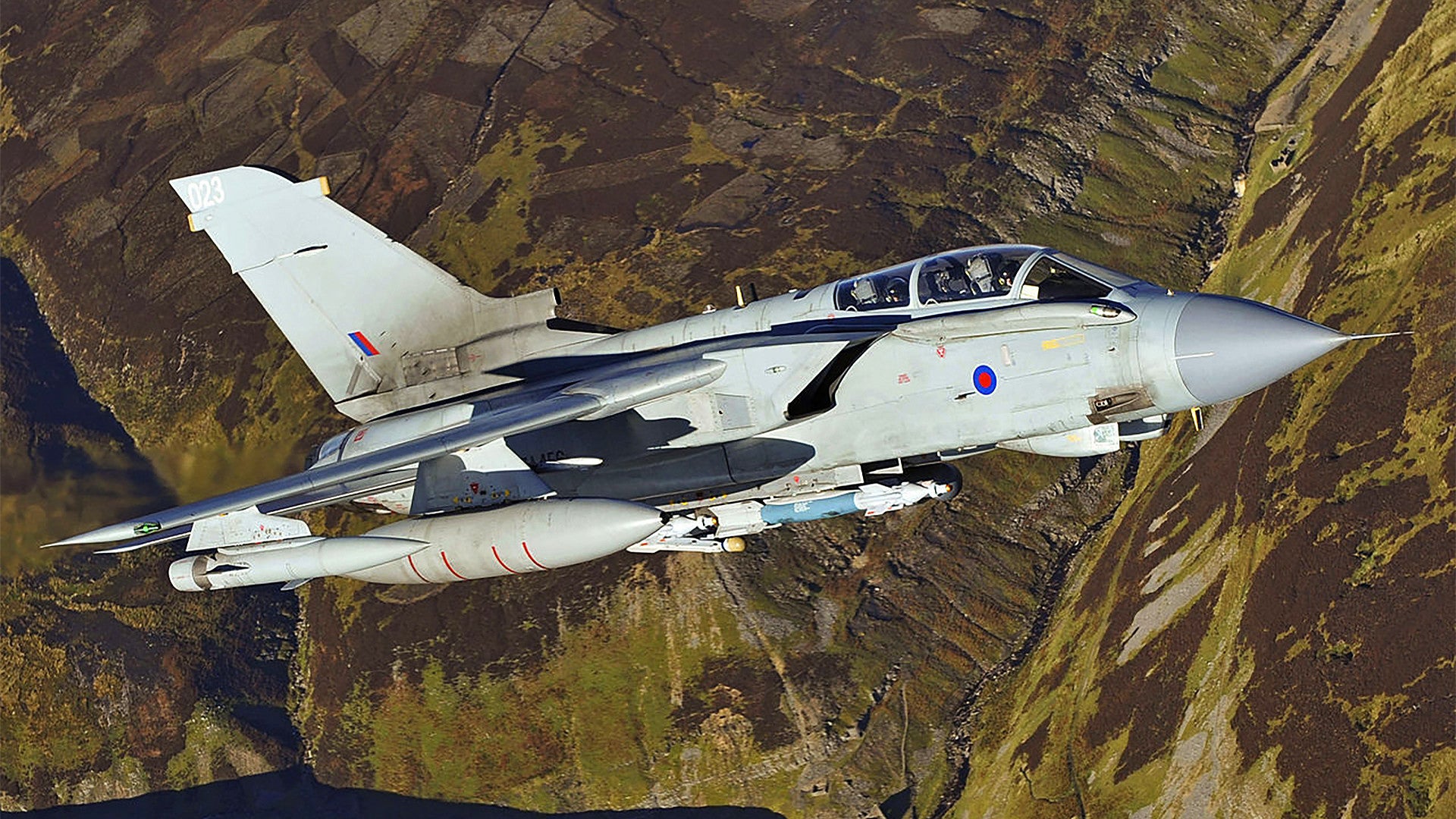The Royal Air Force has marked the end of an era and formally retired the very last of its swing-wing Panavia Tornado combat jets. For almost 40 years, the aircraft formed an essential part of British air combat capabilities, but are now giving way to the next generation of aircraft, including the stealthy F-35 Joint Strike Fighter.
The last two RAF Tornado squadrons, No. IX(B) and 31 Squadron, stood down in a ceremony at RAF Marham on March 14, 2019. The event included a parade by members of both units and a fly-by from a single Tornado GR4, which concluded the last official flight by the type in British service.
Photos and video from the event show the jet roaring past at low altitude and at high speed with its swing-wings swept back, a fitting final send off for an aircraft that was originally meant to fly fast and low strike missions against Soviet targets in Europe. Afterward, the jet taxied to a hangar at Marham where Air Chief Marshal Sir Stephen Hillier, the RAF’s top officer, greeted the two pilots, Squadron Leader Ian Dornan, and Squadron Leader Stephen Beardmore.
“Today is a time to rightly recognize the truly exceptional achievements of the people who have been the Tornado Force. We reflect on the courage, skill, commitment and sadly sometimes sacrifice of those who have been at the heart of the Tornado story, from its inception through to the present day,” Air Chief Marshal Hillier said at the ceremony. “All have played their part to the full in the success story that is Tornado.”

The Tornado has been a constant presence in British skies and major factor in U.K. military operations since the RAF received its first examples in 1979. It earned the nickname “Tonka” after the popular line of toy trucks and other vehicles that were “built Tonka tough.” But despite this moniker, the design was born out of years of stutter-started multi-national efforts to develop a new multi-role combat jet.
The United Kingdom’s own requirement traced back to the near legendary cancellation of the British Air Corporation’s (BAC) TSR-2 supersonic strike and reconnaissance aircraft in 1964. Four years later, the U.K. Ministry of Defense cancelled a subsequent order for American-made General Dynamics F-111K swing-wing combat jets.

In parallel, the British had entered into a partnership with the French to develop the Anglo-French Variable Geometry (AFVG) combat aircraft. After France withdrew from the effort, this project subsequently evolved first into the Multi Role Aircraft (MRA) and then became the Multi Role Combat Aircraft (MRCA).
At one time, Belgium, Canada, Italy, The Netherlands, and West Germany were all also involved. The Belgians and Canadians dropped out before the program made any significant progress.
In 1969, the British, Dutch, Italians, and West Germans agreed to form a multi-national conglomerate, with its main headquarters in West Germany, to continue development of the aircraft. The next year, The Netherlands pulled out of the program.
This left BAC in the United Kingdom, the West German firm Messerschmitt-Bölkow-Blohm, and Italy’s Aeritalia to handle various portions of the development and production of the aircraft, which eventually became known as the Tornado.
The result of the program was a twin-engine, two-seat, swing-wing combat aircraft. Panavia built Tornadoes in three main variants, Interdictor/Strike (IDS), Electronic Combat/Reconnaissance (ECR), and Air Defense Variant (ADV). The RAF only operated the IDS and ADV types, referring to them as Tornado GR-series and Tornado F-series aircraft, respectively.
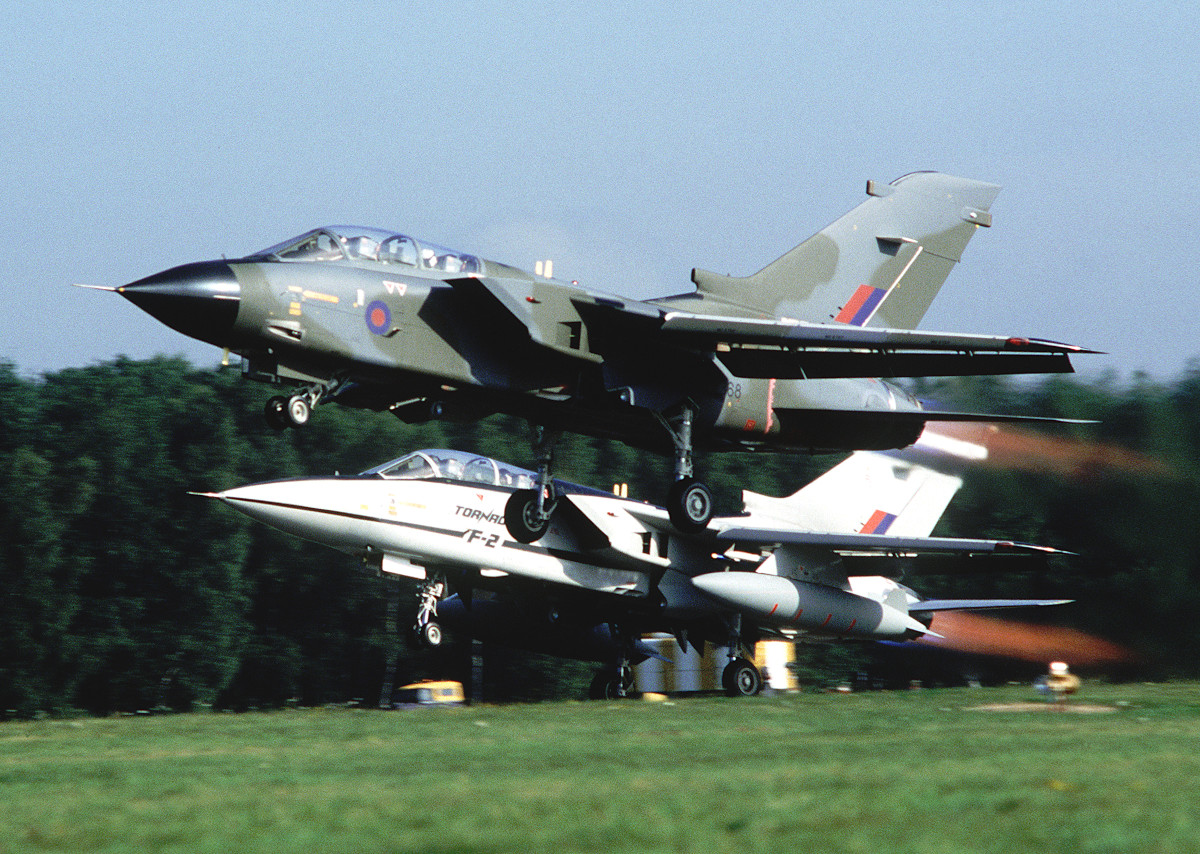
All three types used variants of the Turbo-Union RB199 turbofan engine. The first examples of the IDS featured versions that were of lower performance compared to subsequent models, all of which had generally similar thrust ratings. These engines gave the Tornado a dash speed of more than Mach 2 at high altitude, which was especially important for ADV variants operating in the interceptor role.
The major difference between the IDS and ADV variants was the latter’s GEC-Marconi/Ferranti AI.24 Foxhunter radar, which necessitated a completely different nose shape. With Foxhunter, these planes could detect opponents at beyond visual ranges in any weather.
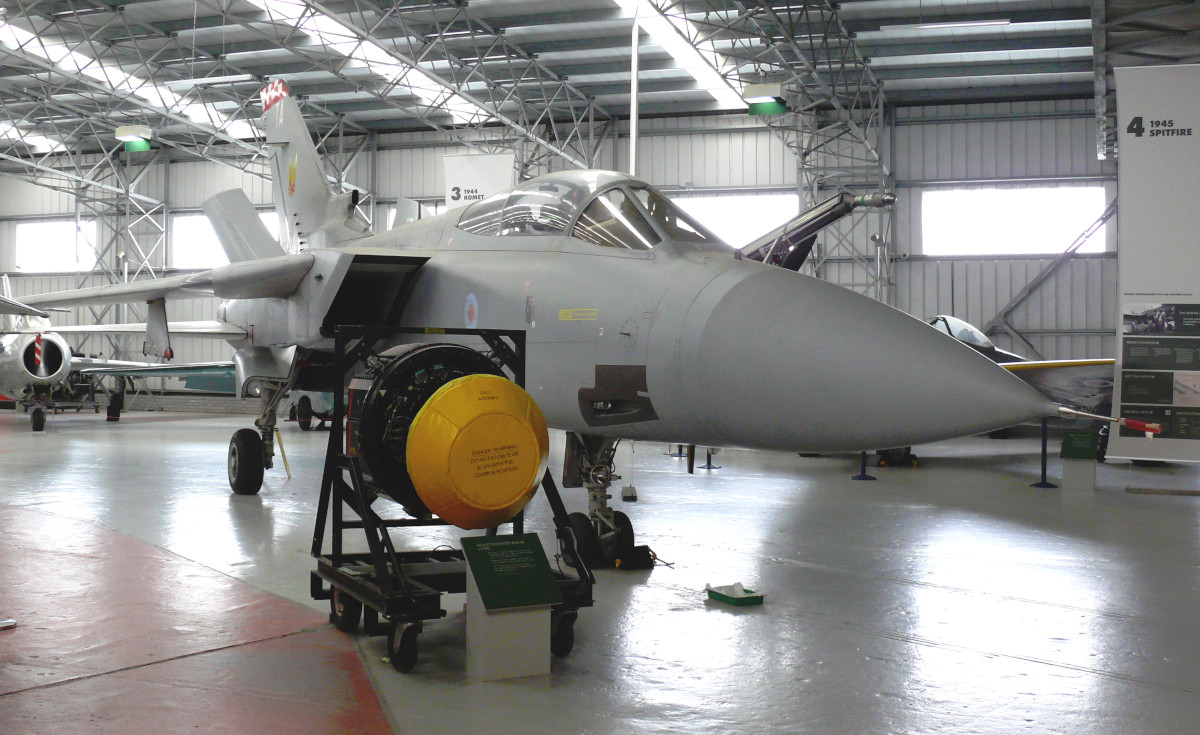
The ADV types also only had a single 27mm Mauser BK-27 automatic cannon mounted in the lower right side of the forward fuselage, whereas the IDS had two of these guns, one on each side. The two aircraft had different under fuselage hard point configurations for various types of ordnance, as well.
Both the IDS and the ADV had a maximum total payload rating of almost 20,000 pounds and provisions for up to four under-wing hardpoints. These stations all swiveled as the wings moved, keeping the stores properly aligned with the direction of travel at all times.
In June 1982, No. IX(B) Squadron became the first ever operational Tornado unit flying first generation IDS variants, known in RAF service as the GR1. The squadron, which traces its history back to World War I, and took part in the famous World War II operation to sink the German battleship Tirpitz, had previously operated the Avro Vulcan heavy bomber.

The Falklands War was just ending as No. IX(B) was reaching its operational status, meaning that no Tornadoes saw action in the South Atlantic. Instead, the truly multi-mission Tornado Force took up stations in the United Kingdom and West Germany to respond to a potential Soviet bloc invasion of Western Europe.
If a major conflict between NATO and the Warsaw had erupted, the RAF’s Tornado GR1s would have sortied out to destroy air bases and air defense sites in East Germany with a mix of regular high explosive and cluster bombs, fixed cluster munitions dispensers containing runway cratering bomblets and anti-personnel mines, and anti-radiation missiles. Aircraft based in West Germany might have also found themselves carrying WE.177 nuclear gravity bombs.
GR1As, equipped with the Tornado Infra-Red Reconnaissance System (TIRRS), were also available to fly pre- and post-strike reconnaissance missions. TIRRS consisted of side-looking infrared cameras on either side of the forward fuselage in place of the two BK-27 cannons and an infrared line scanner camera in the lower fuselage, which gave them a general tactical reconnaissance capability. State of the art for its time, the system recorded imagery and full-motion video on six S-VHS cassettes that personnel would have to retrieve when the aircraft returned to base.
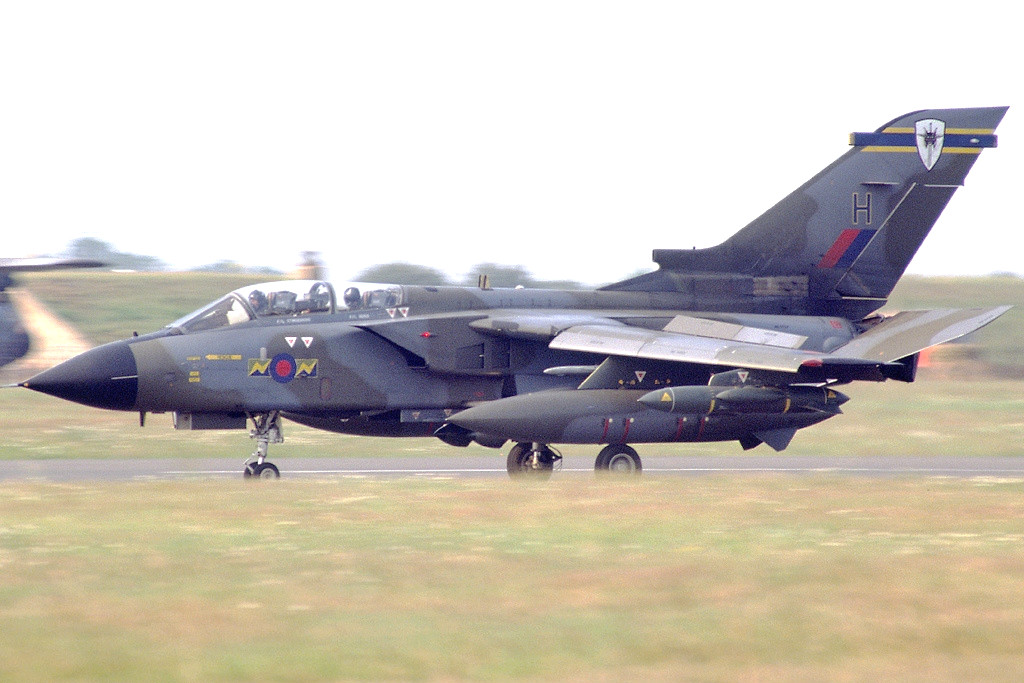
The RAF also had a smaller number of GR1Bs that could carry Sea Eagle anti-ship cruise missiles based in Scotland. From there, these jets would have gone hunting for Soviet ships in the Norwegian Sea, North Sea, and other nearby bodies of water.
In 1984, the RAF also began flying its first version of the ADV, known as the F2, but problems with the Foxhunter radar left them relegated primarily to training duties. The jets flew with concrete ballast in their nose, which RAF personnel jokingly referred to as the “Blue Circle” radar, a play on a popular cement brand and British “Rainbow Codes” naming convention for advanced military equipment.
The F2 quickly gave way to the F3, which finally featured working radars, as well as an improved version of the RB199 engine. In 1987, 29 Squadron became the first RAF unit to actually fly the F3 operationally.
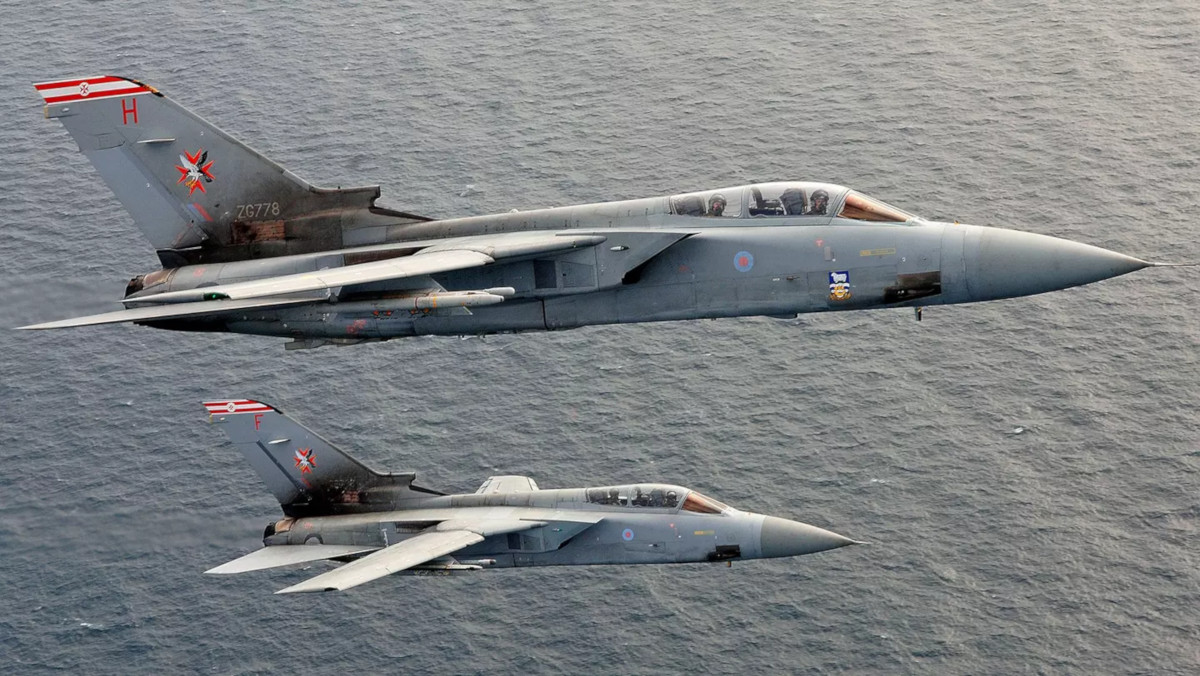
The RAF expected these jets to focus primarily on intercepting Soviet bombers, and engage them at beyond visual range, during any potential conflict. But compared to other fighter jets of the era, the F3’s maneuverability in more close-in engagements was notably poor.
Still, British pilots demonstrated that the combination of their jet’s dash speed, Foxhunter radar, Skyflash missiles, and good tactics could be deadly even against some of the best opponents. RAF F3s came out on top against U.S. Navy F-14 Tomcats and F/A-18 Hornets, among others, in numerous training exercises, something you can read about more here.
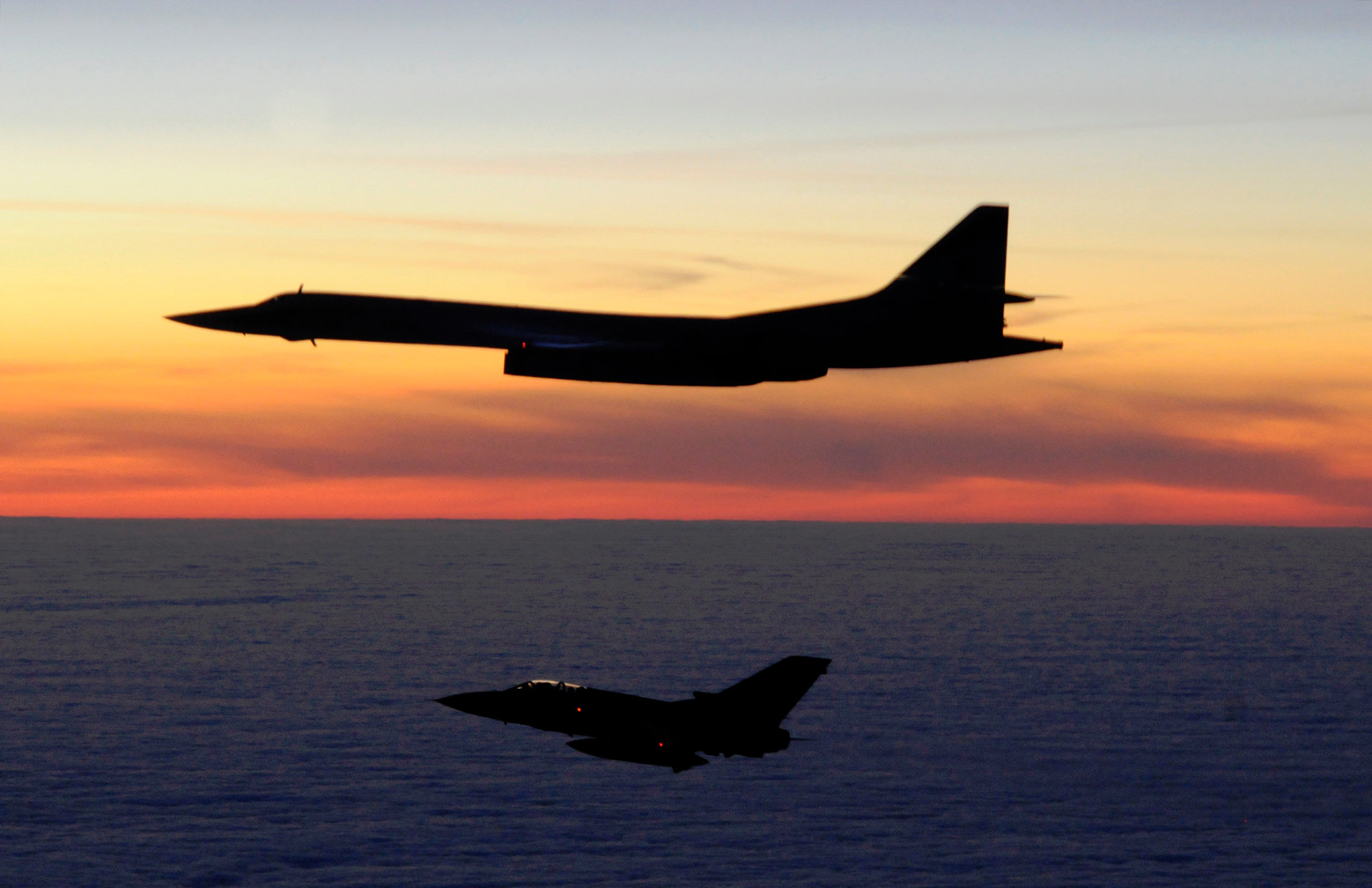
Thankfully the twilight of the Cold War remained cold and no Tornadoes ever had to fly into action against the Soviet Union or the Warsaw Pact. GR1s and F3s instead saw their first combat missions against Iraqi forces following Saddam Hussein’s invasion of Kuwait.
The GR1s performed many of the same missions they would have done in a European conflict, using unguided bombs and JP233 luster munition dispensers, as well as new laser-guided bombs, to attack Iraqi airfields and surface-to-air missile systems. F3s flew thousands of combat air patrols overhead to keep away enemy fighter jets.

The Tornado did not have its own laser designator, requiring other aircraft to mark targets initially. Some of the jets eventually did receive the GEC Marconi Thermal Imaging Airborne Laser Designator (TIALD) targeting pod during the conflict to allow them to laser designate targets themselves.
The United Kingdom became the first country to lose a Tornado in combat when an Iraqi soldier shot one down with a SA-16 shoulder-fired surface-to-air missile in January 1991. The RAF would lose five more aircraft during the campaign to eject Saddam’s troops from Kuwait.
Analysis of these incidents highlighted the risks of the Tonka’s low-level tactics. The jets had to make extremely low passes to effectively employ the JP233s in particular. By the end of the First Gulf War, these types of missions had given way to higher-altitude bombing runs.
Lessons learned from the GR1’s performance during the conflict also contributed to a Mid-Life Update program that began in 1996. British Aerospace, BAC’s successor, eventually upgraded more than 140 GR1s and GR1As to the new GR4 and GR4A standard. This improvement program, which ran through 2003, added new avionics, updated communications equipment and data links, and a more robust ability to self-designate targets for laser guided bombs through the eventual integration of the Israeli-developed LITENING targeting pod.
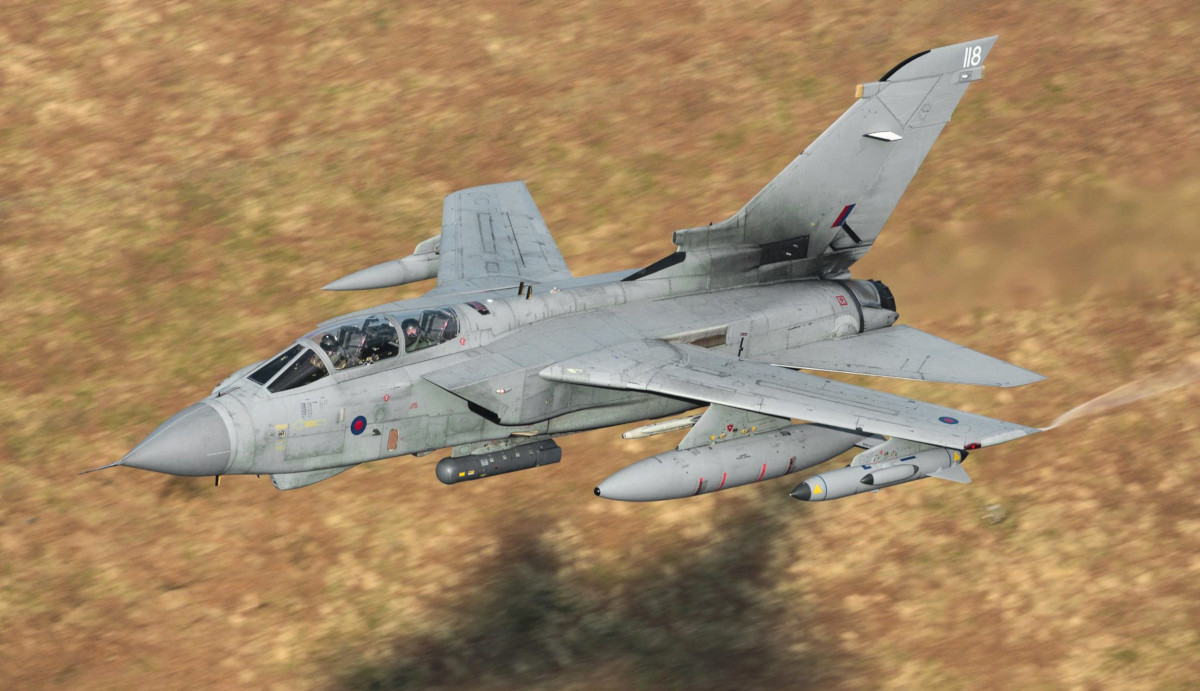
As the upgrade program was progressing, GR1s continued to serve in the Middle East, contributing to no-fly zones over Iraq, and took part in international peacekeeping and peace enforcement missions in the Balkans, flying over Bosnia and Herzegovina and Kosovo. The Tonkas had firmly become the primary combat aircraft in the RAF.
Separately, in the late 1990s, the Tornado GR1 and GR4s gained the ability to carry the Reconnaissance Airborne Pod Tornado (RAPTOR), a U.K.-specific version of the DB-110 intelligence, surveillance, and reconnaissance pod, which you can read more about here. This system effectively rendered the older TIRRS obsolete, allowing tactical reconnaissance squadrons to fly regular GR1s and GR4s.
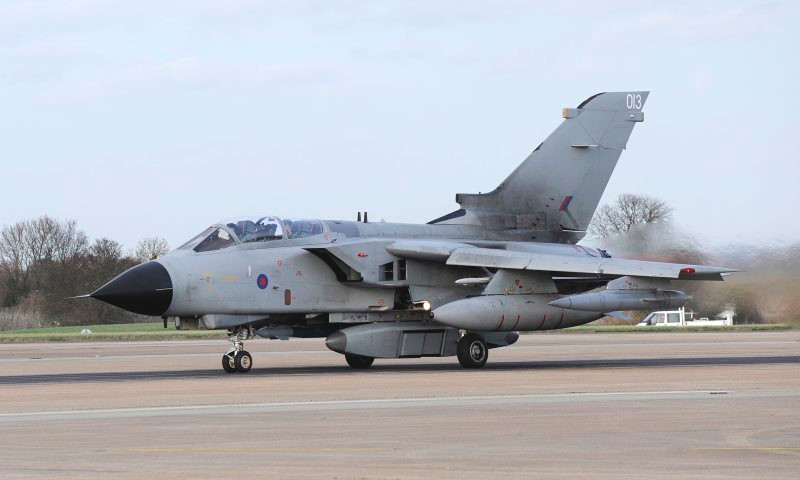
In 2003, Tornados took part in the opening phases of the invasion of Iraq, employing the new Storm Shadow cruise missile, as well as RAPTOR, in combat for the very first time. Unlike during the First Gulf War, the Tornado Force suffered virtually no losses during the conflict. The one exception was when a U.S. Army Patriot surface-to-air missile battery mistakenly identified one of the Tonkas as an enemy jet and shot it down, killing both pilots on board.
Precision guided munitions steadily became the norm, as well. During the Kosovo campaign, just a quarter of the munitions that the Tonkas employed were guided. In Iraq in 2003, 85 percent of all the weapons they used were “smart.” At this time, the primary precision guided munitions were laser-guided Paveway bombs, but the Tornadoes arsenal eventually expanded to include dual-mode laser- and GPS/INS-guided Enhanced Paveway bombs and dual-mode Brimstone missiles. The last RAF Tonkas left Iraq in 2009.
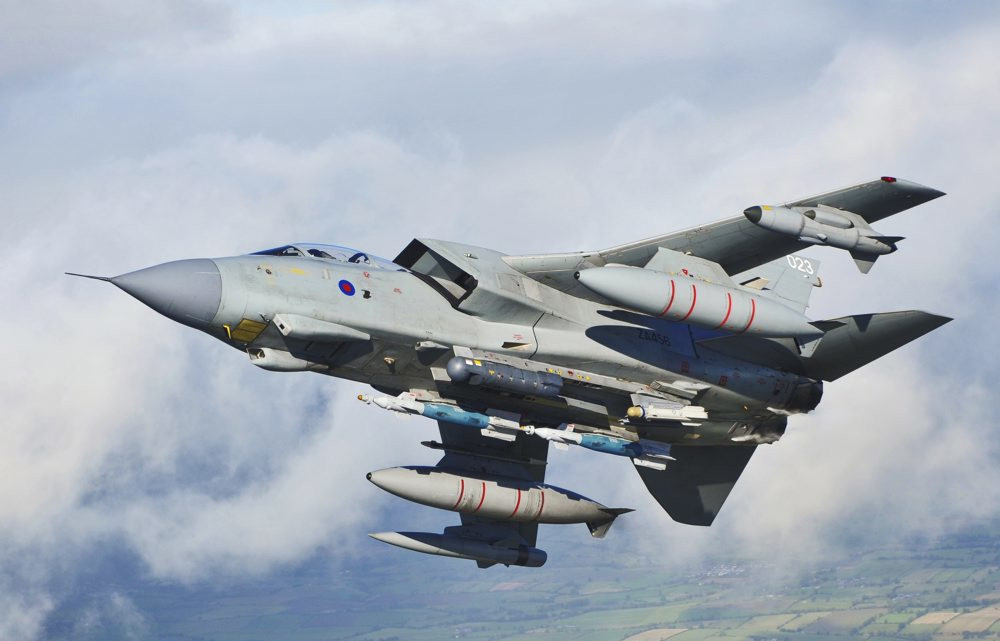
The Tonkas remained at the core of the RAF’s combat capabilities even after the introduction of the Eurofighter Typhoon, which began in 2003. Difficulty in that aircarft’s development delays its entry into service to begin with and when it did arrive, it had extremely limited air-to-ground capabilities. But those more modern jets did certainly contribute to the decision to retire the Tornado F3s, which the RAF stopped flying for good in 2012.
The remaining GR4s continued to receive additional upgrades. In 2004, BAE Systems, which had absorbed British Aerospace, began overhauling the front and rear cockpits in these jets, adding in new digital multifunction displays in place of old CRT screens. They called the update the Tornado Advanced Radar Display Information System, or TARDIS, a clear reference to the phone box-shaped time machine in the popular British television series Dr. Who.
After Iraq, and with these additional upgrades, Tonkas made their way to Afghanistan to take part in that conflict. The last jets headed home from that theater in 2014. RAF Tornados also took part in the U.S.-led campaign in Libya in 2011 that led to the ouster of long-time dictator Muammar Gaddafi.
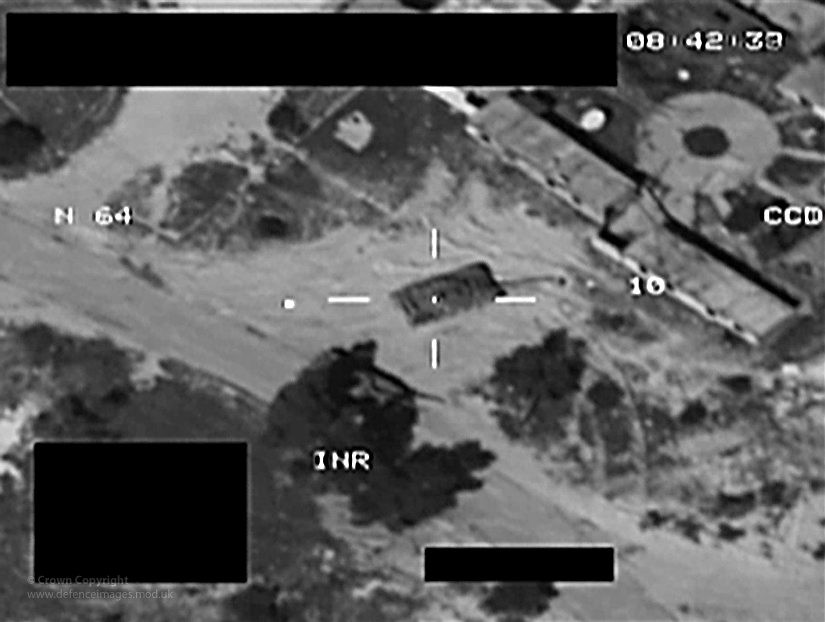
The last major campaign for the RAF’s Tornados began in 2014 with operations against ISIS in Iraq, with those operations eventually extending into Eastern Syria. The aging swing-wing jets also took part in the U.S.-led missile strikes against Bashar Al Assad’s chemical weapons infrastructure on Apr. 14, 2018. Four Tonkas, flying from RAF Akrotiri in Cyprus, each fired two Storm Shadow cruise missiles at a weapon storage facility west of the Syrian city of Homs.
Over the years, the Tonkas have been a regular sight across the United Kingdom, as well as elsewhere around the world, during training exercises and at air shows. They were also called upon for non-combat missions now and again. In 2014, 31 Squadron’s jets notably used their RAPTOR pods to capture imagery of flooding in the Thames River Valley in support of disaster relief efforts.
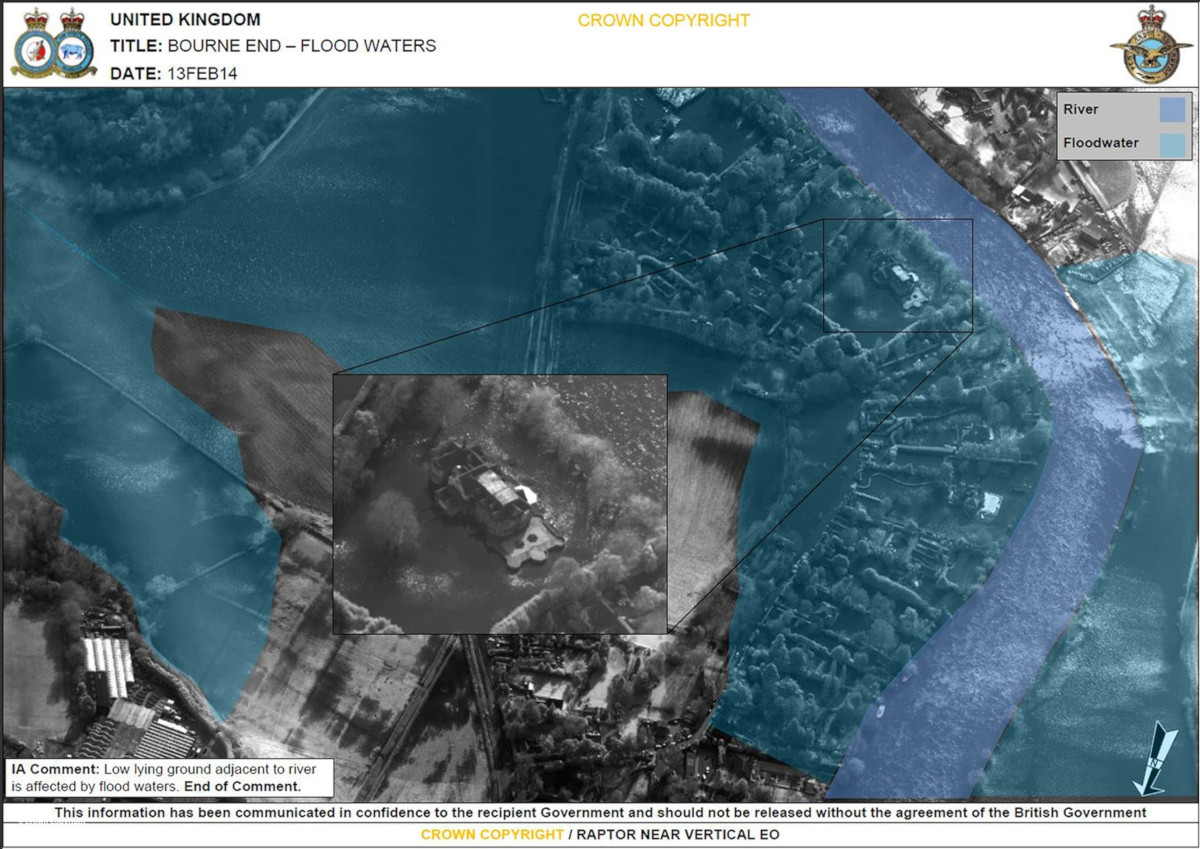
So, the sunset of the United Kingdom’s Tornadoes and the celebration of their lengthy service is certainly bittersweet for many. It certainly marks a major change for the RAF.
Typhoons will be the aircraft to primarily take over from the Tornado now. The RAF eventually plans for the F-35 Joint Strike Fighter to fulfill many of the roles the Tonka had fulfilled as time goes on. No. IX(B) Squadron will reform as a Typhoon unit on Apr. 1, 2019, while 31 Squadron will come back into being in 2024 to begin flying the Protector unmanned aircraft, a derivative of the General Atomics MQ-9 Reaper.
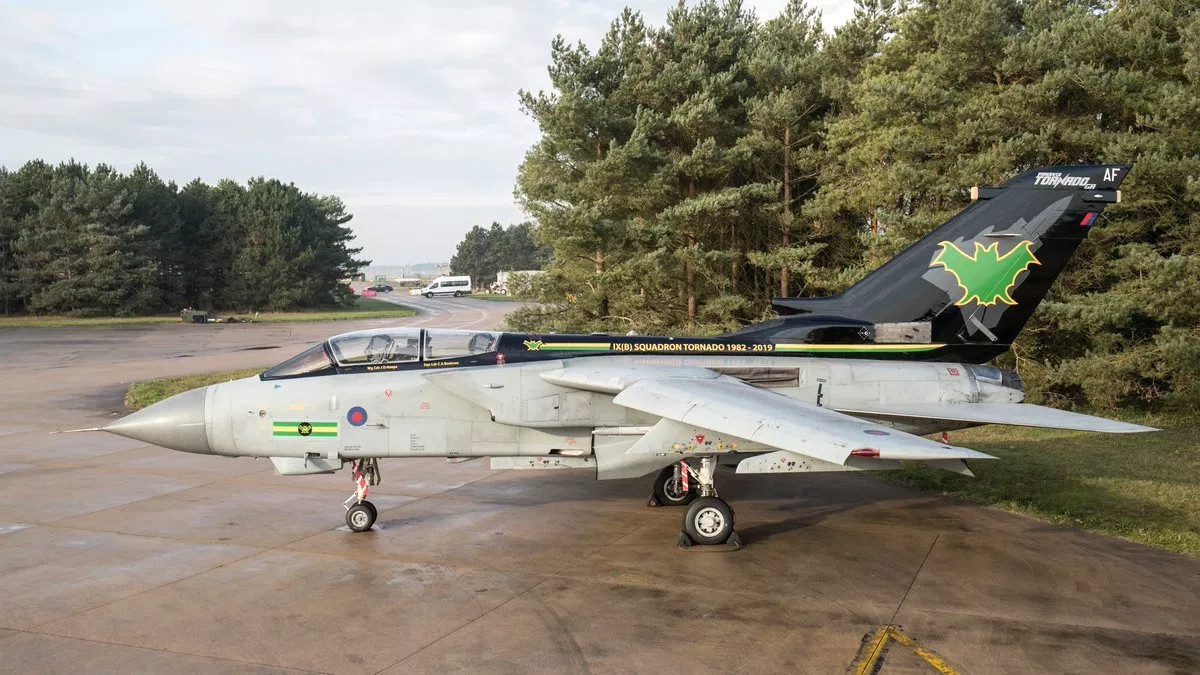
The RAF’s retirement of the Tornado also marks the continued decline of active swing-wing combat jets in service around the world. The Tonka itself was never a big export success, with the only customer outside of the Panavia cooperative being Saudi Arabia.
Italy is slated to replace its jets with the F-35 Joint Strike Fighter by 2025. The Germans are looking to retire their entire fleet with an as yet unknown type by 2030. It’s not clear how much longer the Saudis, who are steadily acquiring more advanced combat jets, expect to fly their Tonkas.
“It was an honor and a privilege to be the crew to fly this iconic jet for the very last time and the fact that we have been able to conduct these flypasts is testament to the hard work that has been put in by the engineers to ensure the jets were serviceable,” Squadron Leader Dornan said after finishing the final Tornado flight. “The skies over Norfolk and the U.K. are going to be a lot emptier without her.”
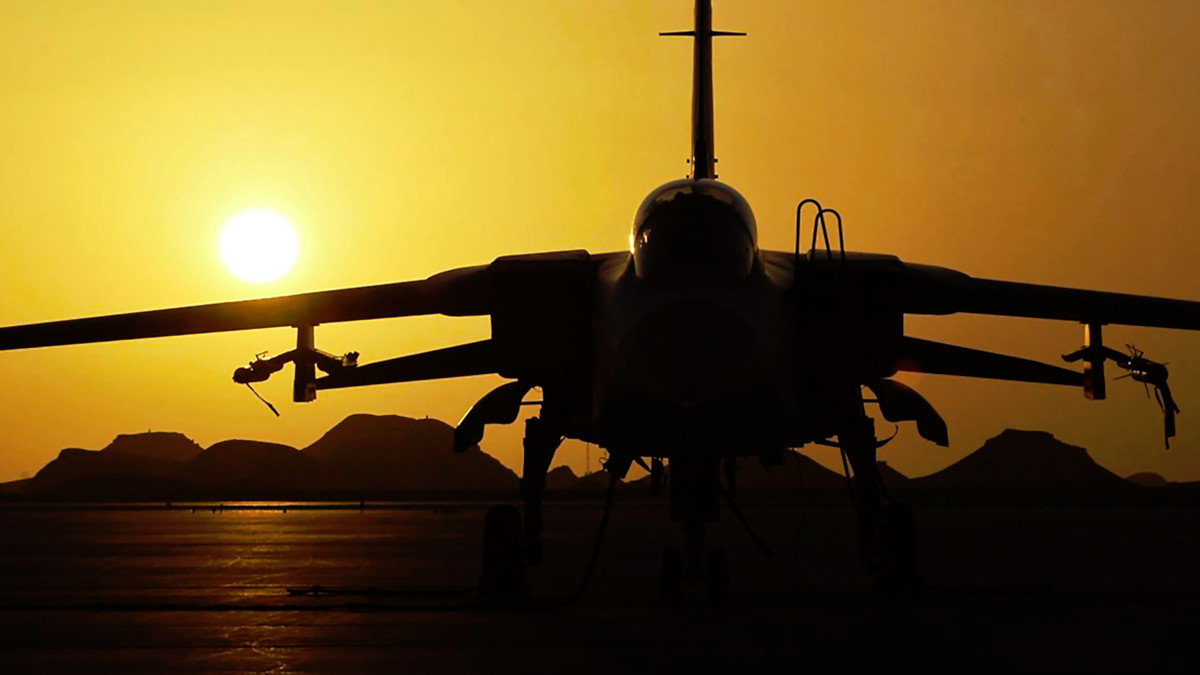
Unfortunately, nothing, no matter how “Tonka Tough,” lasts forever. But the Tornado certainty made its mark on the RAF and will be fondly remembered years from now as an essential part of the service’s history.
Contact the author: jtrevithickpr@gmail.com
